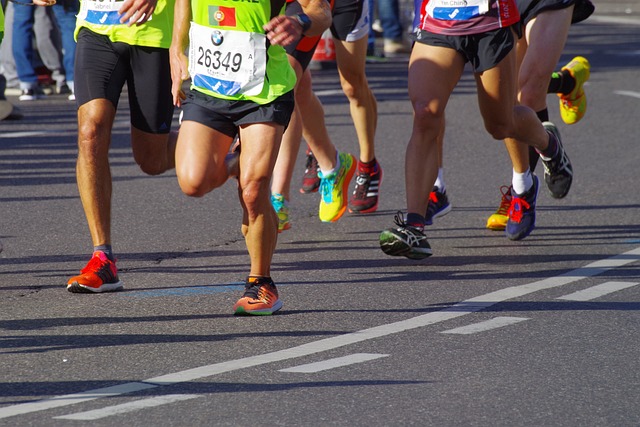Shin splints are a common source of pain for newer runners, and misconceptions abound when it comes to managing them. Learn how to prevent and treat shin splints and keep them from developing into a more serious injury.
Although runners of any level can suffer from shin splints, beginners and those returning to running after a long layoff are most commonly affected. Shin splints cause an unmistakable pain in your lower leg that most typically comes from the inner part of your tibia, the larger bone on the inside of your lower leg.
Shin splints – or medial tibial stress syndrome – are often a painful indicator that your training has progressed too quickly for your body to adapt. They can arise from a rapid jump in mileage or intensity, and failing to address them can lead to more serious injury. Newer runners are most susceptible because their bodies are less prepared the repetitive demands of running.
If you are suffering from shin splints, you may be surprised to learn that you rarely need extended time away from running. Learning how to manage your training and build strength in your feet and lower legs can get you on the road to recovery more quickly than you expect. On the podcast this week, Dr. Duane Scotti and I do a deep dive on this nagging and persistent injury.
Duane Scotti on shin splint management and prevention
Previously, Duane and I discussed hamstring health on episode 141. Now he is here to talk about everything related to shin splints, and get runners with this injury on the road to a quicker recovery. Duane is a physical therapist, a Board-Certified Orthopaedic Clinical Specialist, a certified running coach, and the host of the Healthy Runner Podcast.
After years in the gym, Duane developed a love for running and founded Spark Healthy Runner, a coaching-focused group devoted to helping runners love the sport and run injury free. Duane recognizes the major impact that training decisions have on injury, and uses his combined coaching and physical therapy skills to get the most from his runners.
Since there are many misconceptions about shin splints, Duane and I start with the basics and discuss everything you need to know to make shin splints a thing of the past, including:
- What actually causes the pain of shin splints
- The difference between shin splints and other lower leg injuries, including compartment syndrome, posterior tibial tendinopathy, and more
- The primary causes of shin splints
- Why untreated shin splints can put you at greater risk for a stress fracture
- Prevention and treatment strategies, including PEACE & LOVE
- The role of strength work and cross-training to address shin splints
Duane’s knowledge combined with his enthusiasm for the sport make for a dynamic discussion with lots of practical advice. Enjoy!
Subscribe to the podcast in Apple Podcasts, Spotify, Stitcher, iHeartRadio, or Google Play
Links & Resources from the Show:
Thank You GOODR!
If you watch my videos on YouTube you know that I’ve been wearing Goodr sunglasses for nearly a decade. They’re super affordable – starting at only $25, made for running so they stay on your face, and the styles are just wild. They’re also a 100% Carbon Neutral company, meaning they offset all of their carbon emissions, and they donate 1% of their profits to environmental causes.
Goodr offers a 30-day money back guarantee and 100% satisfaction but I know you’ll find a pair you love from the hundreds of styles they have. Find yours here at Goodr to get free shipping.
Thank you Elemental Labs!
A big thanks to Elemental Labs for their support of this episode! They make electrolyte drinks for athletes and low-carb folks with no sugar, artificial ingredients, or colors. And you can get a free sampler pack of 4 flavors and 8 individual packets when you pay $5 in shipping.
Elemental Labs’ products have some of the highest sodium concentrations that you can find. Anybody who runs a lot knows that sodium, as well as other electrolytes like magnesium and potassium, are essential to our performance and how we feel throughout the day.
The citrus flavor has quickly become my favorite. I’m drinking one a day now to help me get enough fluids in our dry Colorado air. It’s tasty and delicious and I find that I’m not peeing every 45 minutes throughout the day, which might be an indication I wasn’t eating enough sodium.
There’s now mounting evidence that higher sodium intake levels are not unhealthy – and athletes need substantially more than your typical sedentary person. Of course, ask your doctor if you’re worried. But for those athletes running outside in the heat, an electrolyte replacement makes a lot of sense. So check out Elemental Labs to try their new flavor or get a free sampler pack.
